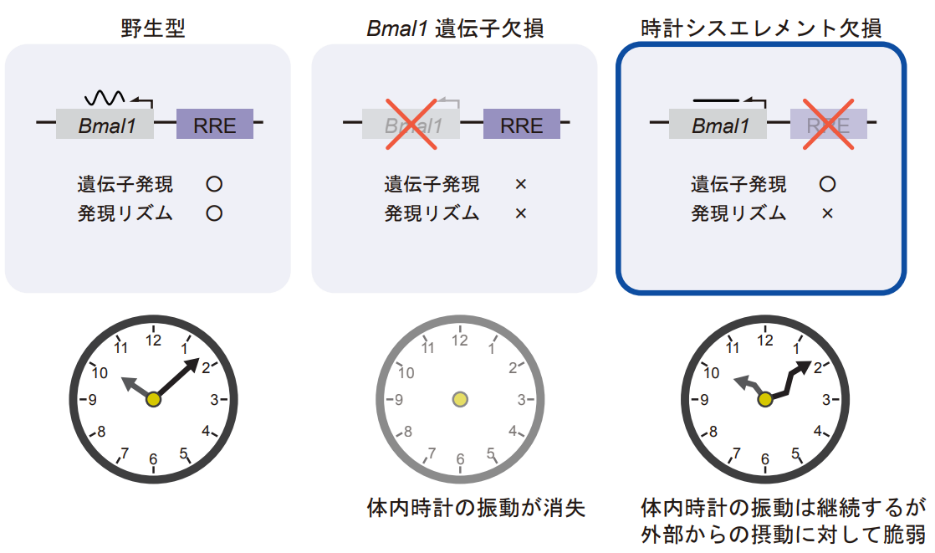 |
October 2023 Mouse of the Month |
Transcriptional rhythm control of the clock gene Bmal1
C57BL/6J-Arntl<em1Yshtn> (RBRC11753)
|
| The biological clock is an endogenous timekeeping system that rhythmically regulates various physiological functions such as sleep, metabolism, and hormone secretion in approximately 24-hour cycles in order to adapt to the external environment. For the mammalian biological clock, an oscillatory model has been proposed that couples two types of feedback regulatory loops via gene transcription and translation. However, the significance of the transcriptional regulation mechanism by these feedback loops has not been clear. The depositors (Dr. Hikari Yoshitane and his colleagues) focused on the clock gene Bmal1 (Arntl), which encodes a transcription factor essential for biological clock oscillation. They analyzed the effects of deleting of the clock cis-element RRE, which is located upstream of the Bmal1 gene, using cultured cells, individual mice and mathematical simulations. The results showed that the loss of the clock cis-element RRE abolishes the transcriptional rhythm of Bmal1 mRNA, resulting in a constant transcription level, but the biological clock oscillation is maintained unchanged. Furthermore, the results suggest that the feedback loop of the Bmal1 transcriptional rhythm via the clock cis-element RRE contributes to the stabilization of the biological clock oscillation. RIKEN BRC Experimental Animal Division provides mutant mouse strains (RBRC11753 and RBRC11754) lacking the clock cis-element RRE by genome editing technology. This research result, which has clarified an aspect of the molecular mechanism of the biological clock that has attracted much attention not only in the field of basic research but also in the clinical aspect, is expected to be greatly developed in the future. |
| Keywords | : | Biological clock, Oscillatory model, cis-element, Bmal1, RRE | |
| Depositor | : | Hikari Yoshitane, Ph.D. (Tokyo Metropolitan Institute of Medical Science) | |
| Strain name | : | C57BL/6J-Arntl<em1Yshtn> | |
| RBRC No. | : | RBRC11753 | |
| Strain name | : | C57BL/6J-Arntl<em2Yshtn> | |
| RBRC No. | : | RBRC11754 | |
| References | : | [1] | Abe YO, Yoshitane H, Kim DW, Kawakami S, Koebis M, Nakao K, Aiba A, Kim JK, Fukada Y. Rhythmic transcription of Bmal1 stabilizes the circadian timekeeping system in mammals. Nat Commun. 2022 Aug 23;13(1):4652. |
| [2] | Mechanism and significance of time-dependent transcription of the clock gene Bmal1. August 23, 2022 Press releases from The University of Tokyo |
||
| October 2023 Saori Mizuno, Ph.D. Contact: Experimental Animal Division, RIKEN BioResource Research Center (animal.brc@riken.jp) All materials contained on this site may not be reproduced, distributed, displayed, published or broadcast without the prior permission of the owner of that content. |





